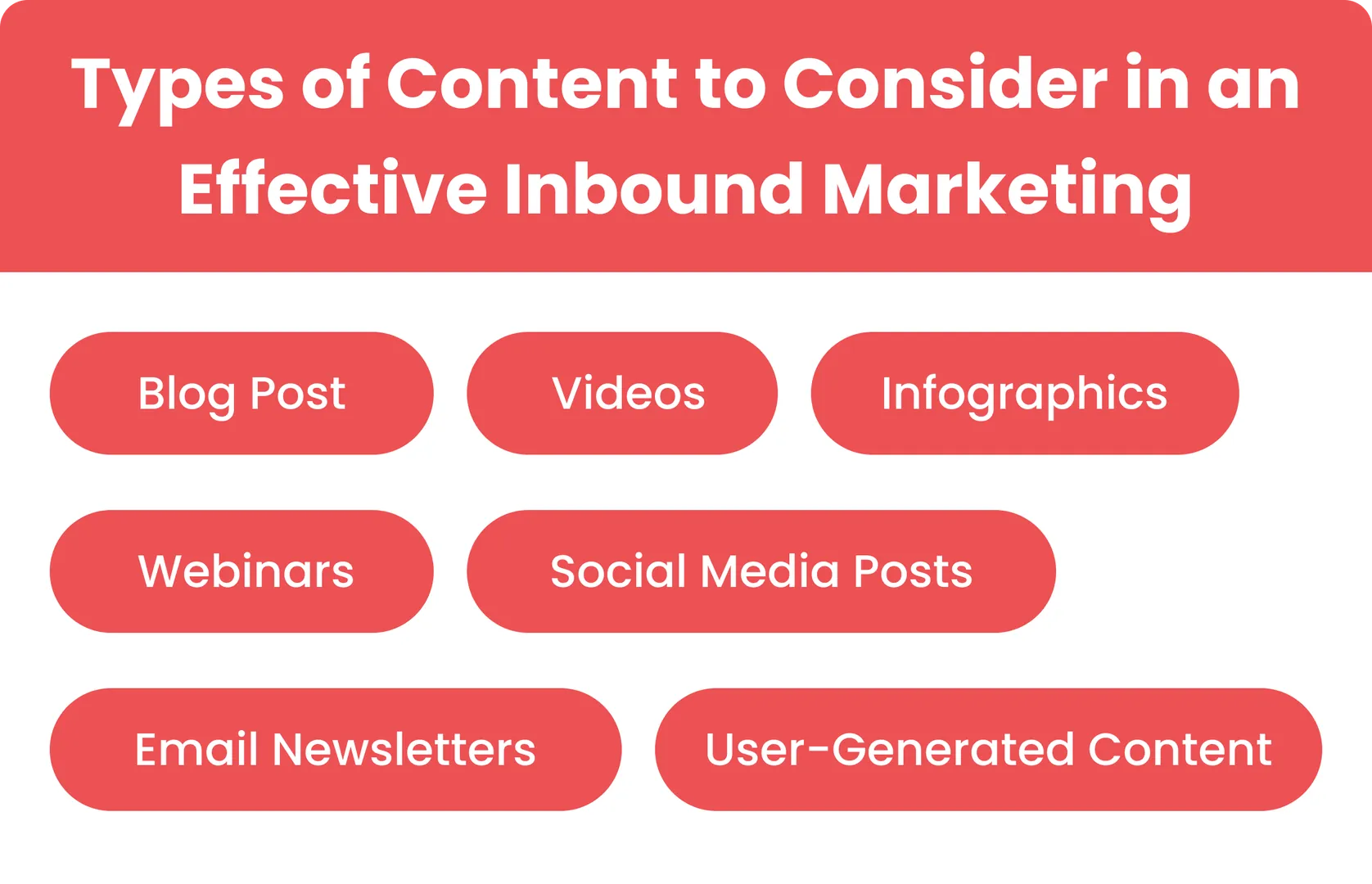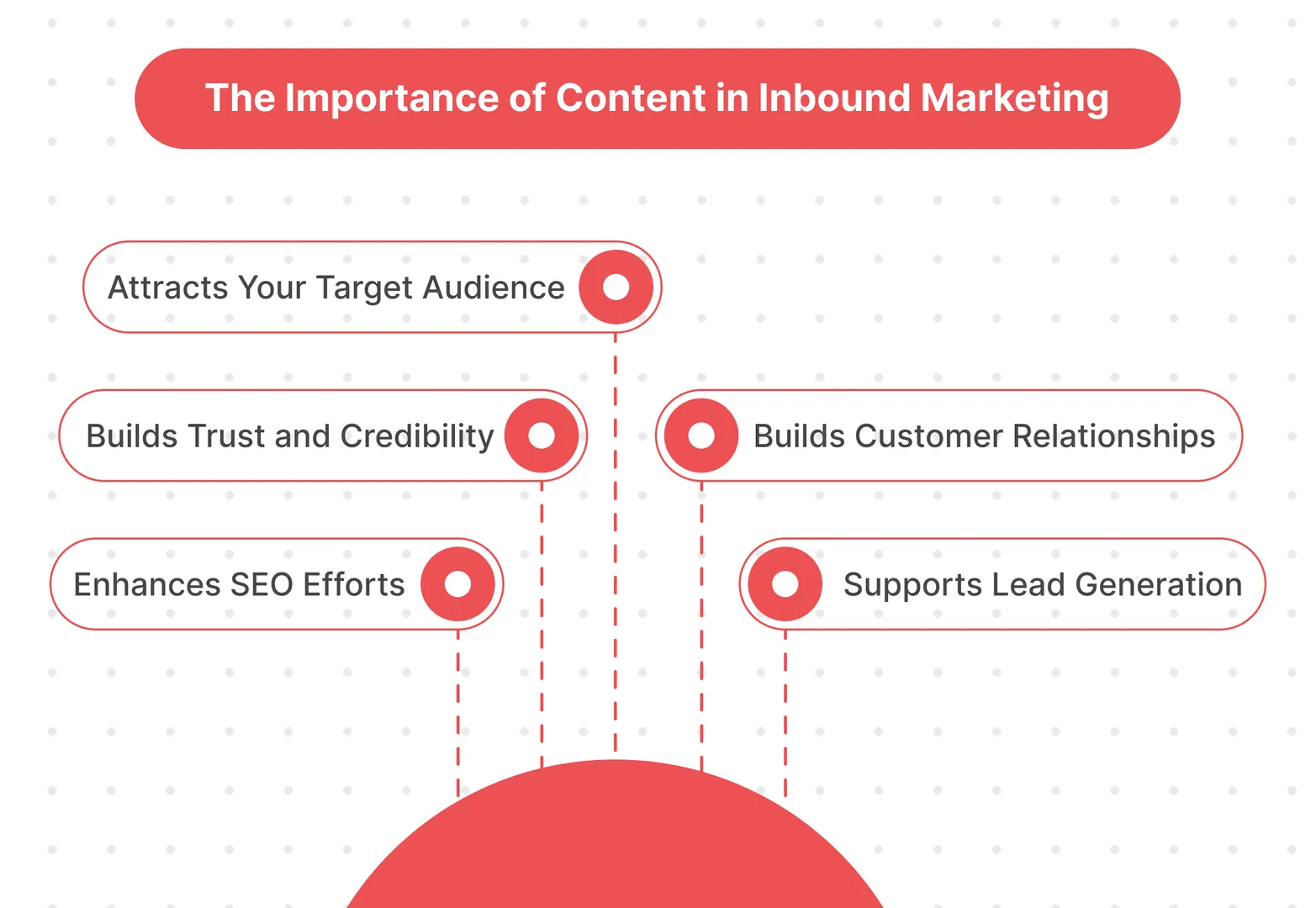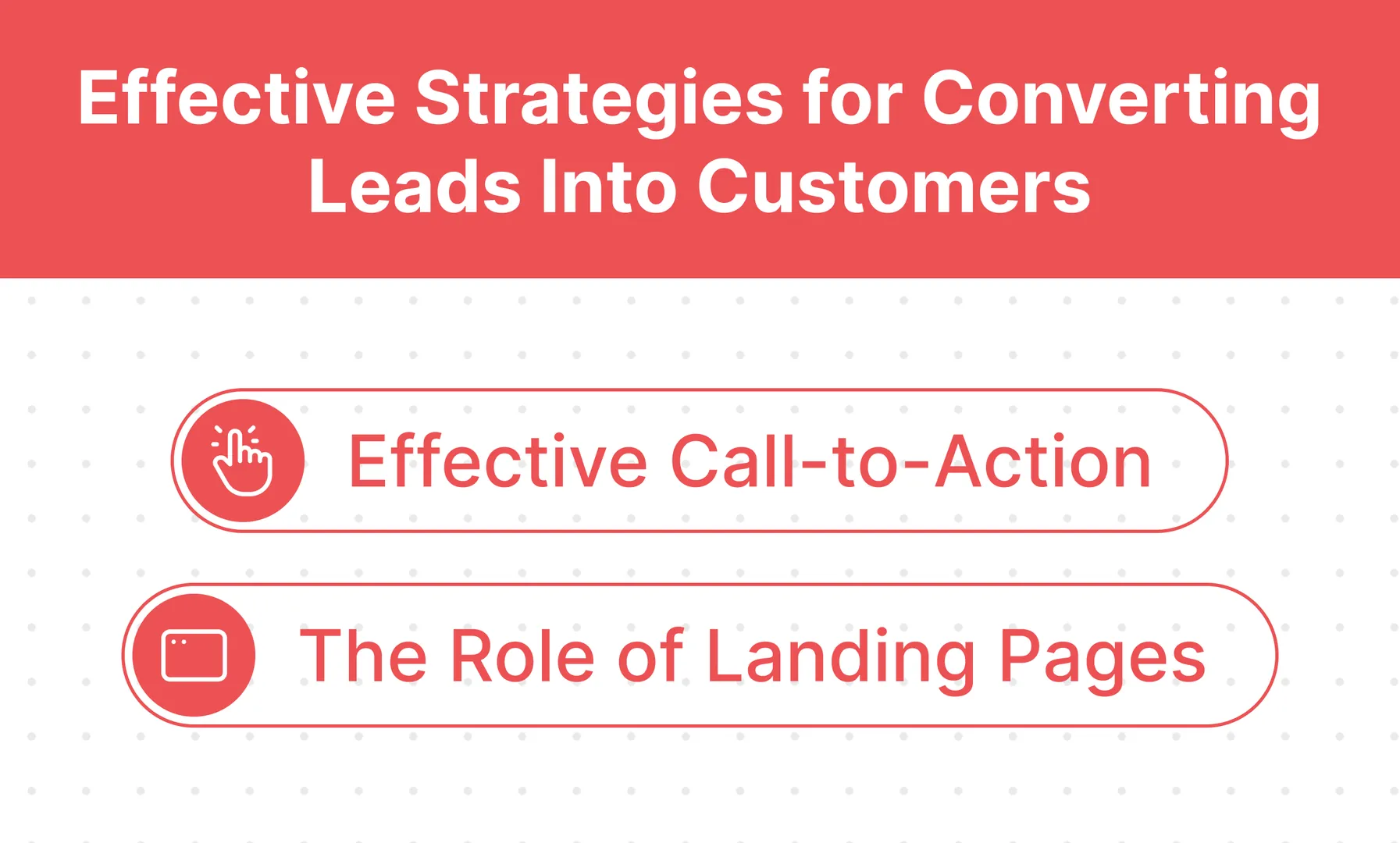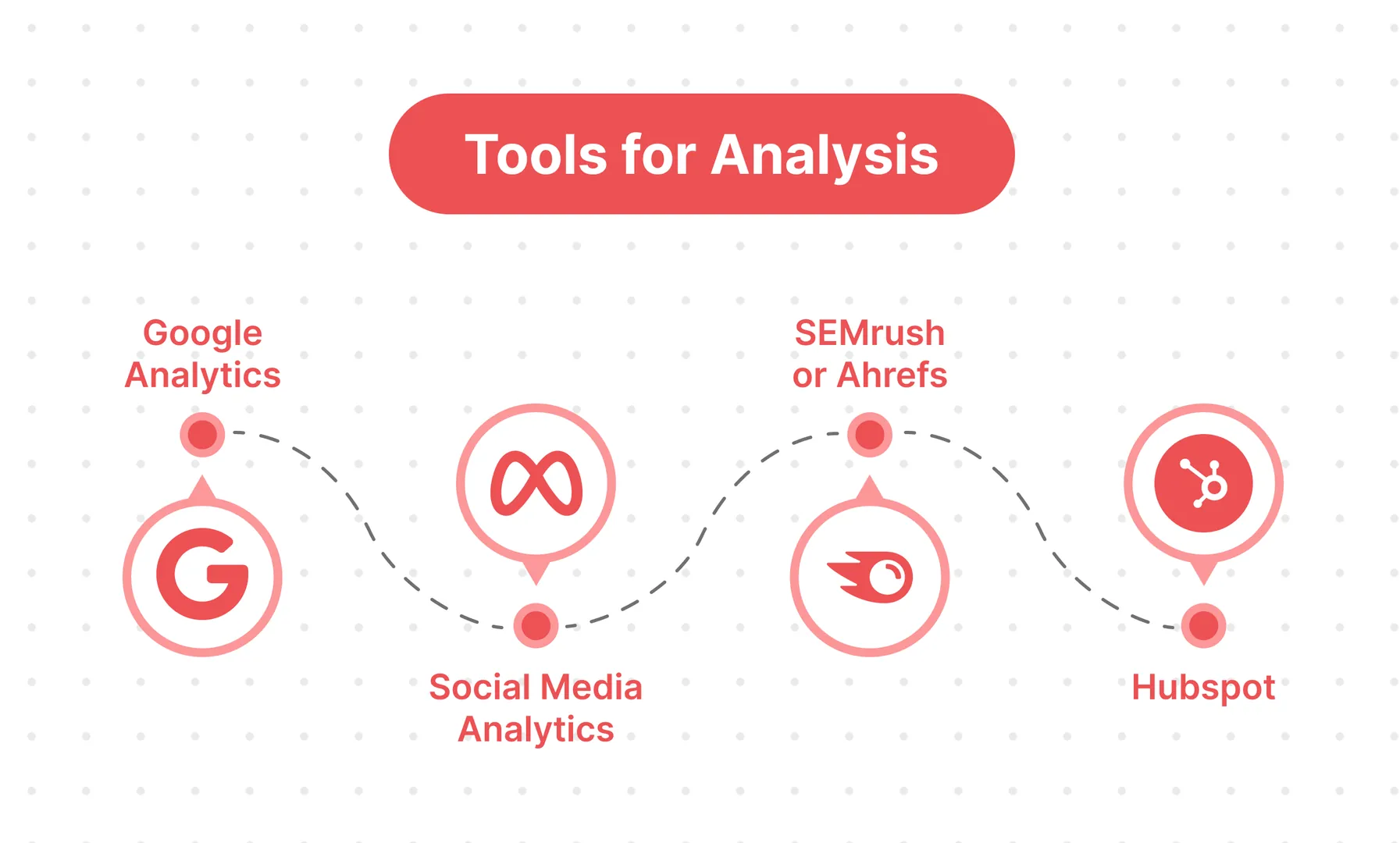From Strangers to Customers: The Role of Content in an Effective Inbound Marketing Strategy
Learn how to convert strangers into loyal customers with effective inbound marketing strategies. Explore the role of engaging content, powerful calls-to-action, and essential metrics to measure success in your inbound marketing efforts.

Summary :
Effective inbound marketing depends on engaging and helpful information that captures interest and encourages people to explore further. This approach builds a sense of trust, making it more likely for potential customers to see your brand as their go-to choice. By implementing effective inbound marketing, you can significantly enhance customer engagement and drive conversions.
To connect with your audience, it’s crucial to create content that speaks to their needs and interests. This means delivering insights and solutions through engaging articles, eye-catching videos, and interactive social media posts. When you focus on what resonates with your audience, you not only attract their interest but also start building lasting relationships. Explore how thoughtful content can be a game-changer in your marketing efforts, guiding potential customers on their journey and leading to meaningful success.
Understanding about Inbound Marketing
Imagine you’re browsing online, searching for solutions to a problem. You come across a blog post that perfectly addresses your concerns. You find a downloadable guide that deepens your understanding and gives you actionable insights. Over time, you start following this brand on social media because they consistently provide value, and you feel a connection.
This is the core of what inbound marketing aims to achieve.
Inbound Marketing is a smart way to attract customers by sharing useful and interesting content. Instead of sending a lot of ads to everyone (like traditional marketing), inbound marketing brings people in by offering them value and encouraging them to connect with your brand.
Think of it like this: when you create helpful blog posts, videos, or guides that answer questions or solve problems, you’re inviting potential customers to learn more about you. It’s about building relationships rather than just making a sale!

1) Attract
First, get people interested in what you offer. Make useful content, like blog posts or videos, that answers their questions. Use social media and search engine tips to help more people find your website.
2) Engage
Once you’ve caught their attention, keep them interested. Offer valuable resources like ebooks or webinars. Make sure to communicate with them through emails or social media to build a relationship.
3) Delight
Lastly, make sure your audience feels good about being with you! Offer great customer service and ask for their opinions. Share useful tips and keep providing helpful content so they feel valued and want to stay in touch.
Types of Content in an Effective Inbound Marketing Strategy
An effective inbound marketing strategy uses various types of content to draw in, engage, and convert potential customers. Here are some of the most impactful content types to consider:

1) Blog Post
Blogging is a cornerstone of inbound marketing. Regularly published articles can drive traffic to your website, improve SEO, and position your brand as an authority in your industry. Focus on topics that address your audience’s pain points and provide valuable insights.
2) Videos
Video content has become very popular and can really help connect with your audience. You can use videos to explain complicated ideas, show off your products, or share customer stories. Websites like YouTube and social media are great places to share your videos.
3) Infographics
Infographics present information in a visually engaging format, making it easier for audiences to digest complex data. They are highly shareable and can help increase brand visibility while providing valuable insights.
4) Webinars
Webinars offer an interactive platform for sharing expertise and connecting with your audience. They allow for real-time engagement, Q&A sessions, and the opportunity to address specific concerns of your audience.
5) Social Media Posts
Social media platforms are essential for promoting content and engaging with your audience. Share blog posts, images, videos, and updates that resonate with your followers. Consistent posting helps maintain visibility and fosters community interaction.
6) Email Newsletters
Email marketing is a powerful tool for developing leads and maintaining relationships with customers. Regular newsletters can provide valuable content, company updates, and personalized offers designed for your audience’s interests.
7) User-Generated Content
Encouraging customers to share their experiences and reviews can enhance your brand’s authenticity. User-generated content, such as testimonials and social media posts, adds credibility and fosters community engagement.
The Importance of Content in Inbound Marketing
Content is at the heart of any successful inbound marketing strategy. It plays a crucial role in attracting, engaging, and converting potential customers. In effective inbound marketing, high-quality content is essential for capturing audience interest and guiding them through the buying journey. Here are some key reasons why content is essential in inbound marketing:

1) Attracts Your Target Audience
Good quality content attracts the right people to your website. By focusing on what they care about, need, and struggle with, you can grab their attention and encourage them to learn more.
2) Builds Trust and Credibility
Consistently providing valuable and informative content establishes your brand as a trusted authority in your industry. When customers see that you offer genuine insights and solutions, they are more likely to trust your brand and consider your products or services.
3) Enhances SEO Efforts
Search engines love fresh, relevant content. By regularly updating your site with quality content, you improve your chances of ranking higher in search results, making it easier for potential customers to find you.
4) Supports Lead Generation
Compelling content can act as a lead magnet, encouraging visitors to share their contact information in exchange for valuable resources like e-books, webinars, or exclusive offers. This helps you build a database of potential customers.
5) Builds Customer Relationships
Effective content continues to engage customers even after the initial sale. By providing helpful information, tips, and updates through email newsletters or blogs, you keep your brand top-of-mind and foster long-term loyalty.
6) Facilitates Sharing
Shareable content, such as informative articles, videos, or infographics, can expand your reach significantly. When your audience shares your content on social media, it exposes your brand to new potential customers and increases your visibility.
Converting Leads into Customers: Effective Strategies
To effectively convert leads into customers, it’s important to utilize clear strategies such as compelling calls-to-action and well-designed landing pages. Here are key elements to focus on:

Effective Call-to-Action
Calls-to-action (CTAs) are prompts that encourage your visitors to take specific actions, like signing up for a newsletter or making a purchase. To be effective, CTAs should be clear and appealing. Use action words like “Download Now,” “Get Started,” or “Sign Up Today.” Make sure your CTAs stand out visually by using contrasting colors and placing them in noticeable spots on your page. The goal is to make it easy for your visitors to know what to do next!
The Role of Landing Pages
Landing pages are dedicated web pages designed to focus on a single offer or goal. When someone clicks on your call-to-action (CTA), they should go to a landing page that gives more details about what you’re offering. This page should be simple and easy to understand, without too many distractions. In effective inbound marketing, it’s important to include clear information about the benefits of your offer and make it easy for visitors to take action, like filling out a form or making a purchase. Well-made landing pages can really improve your conversion rates.
Understanding Key Metrics for Content Success
Measuring the success of your content is essential for understanding what works and how to improve your strategy. Here are some key metrics to track and tools to help you analyze your performance.
Key Metrics to Track :
Traffic:
Monitor the number of visitors to your content. This shows how effectively your content is attracting an audience.Engagement: Look at metrics like time spent on the page, bounce rate, and social shares. High engagement indicates that your content resonates with readers.
Conversion Rate: Track how many visitors take a desired action, such as signing up for a newsletter or making a purchase. This metric shows how well your content converts leads into customers.
Lead Generation: Measure the number of leads generated from your content, like downloads or sign-ups. This helps assess the effectiveness of your lead magnets.
SEO Performance: Keep an eye on keyword rankings and organic traffic. This shows how well your content performs in search engines.

Google Analytics
This free tool provides insights into website traffic, user behavior, and conversion rates, helping you understand how visitors interact with your content.
Social Media Analytics
Platforms like Facebook, Twitter, and Instagram offer built-in analytics to track engagement, shares, and audience demographics.
SEMrush or Ahrefs
These SEO tools help analyze keyword performance, backlinks, and overall site health, allowing you to improve your content’s search visibility.
Hubspot
This all-in-one marketing platform includes tools for tracking content performance, lead generation, and marketing automation.
Conclusion
In the journey from strangers to customers, content plays a crucial role in guiding potential buyers at every stage. By understanding the buyer’s journey and creating diverse, high-quality content that addresses their needs, you can effectively attract, engage, and convert your audience.
Effective calls-to-action and well-designed landing pages ensure that visitors know exactly what to do next, while customer testimonials and case studies build the trust necessary for conversion. In effective inbound marketing, consistently measuring your content’s success through key metrics and utilizing the right tools for analysis allows you to refine your strategy and maximize your results.
Ultimately, investing in a robust content strategy not only helps turn leads into loyal customers but also establishes your brand as a trusted authority in your industry. By prioritizing quality and consistency, you can foster lasting relationships that drive long-term growth and success.
As you move forward, remember that every piece of content is an opportunity to connect, engage, and convert. Start implementing these strategies today, and watch as your inbound marketing efforts bring positive results.